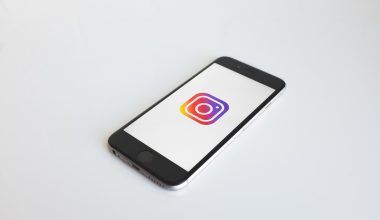In today’s digital world, having a verified Facebook page can make a huge difference for your personal brand or business. A verified page builds trust, boosts credibility, and makes you stand out from the crowd. But the big question is: how do I get a verified Facebook page? Don’t worry, I’ve got you covered! Let’s dive into everything you need to know to earn that coveted blue checkmark on Facebook.
What Does a Verified Facebook Page Mean?
Before we get started, let’s understand what a verified Facebook page is. The blue checkmark next to a page’s name means that Facebook has confirmed the page or profile as authentic. It’s a way of letting others know that your page belongs to a real person, business, or public figure. This verification status is especially valuable if you’re trying to establish authority or prevent impersonation.
Why Is Facebook Verification Important?
You might be wondering why it’s so crucial to get your Facebook page verified. Here are a few reasons:
- Credibility: It shows your audience that you’re the real deal.
- Visibility: Verified pages often rank higher in search results.
- Trust: People are more likely to engage with a page they trust.
- Protection: It reduces the chances of someone impersonating your page.
Now that we know why it’s essential, let’s move on to the steps you need to follow.
Steps to Get Your Facebook Page Verified
Step 1: Meet the Basic Requirements
The first thing you need to do is ensure that your page meets Facebook’s eligibility criteria. Here’s what they look for:
- Authenticity: Your page must represent a real person, business, or organization.
- Completeness: Make sure your page has all the necessary details filled out, such as your profile picture, cover photo, bio, and contact information.
- Activity: Your page should be active with regular posts and engagements.
- Uniqueness: It should represent a distinct entity. Generic pages like fan clubs might not qualify.
Step 2: Optimize Your Page
If you’re serious about getting verified, you need to make your page as professional as possible. Here’s how:
- Profile Picture and Cover Photo: Use high-quality images that represent your brand or identity.
- Complete Your Bio: Include important details about who you are and what you do.
- Contact Information: Add your phone number, email, and website (if applicable).
- Custom Username: Make sure your page’s username is unique and recognizable.
- Consistent Content: Post regularly to show that your page is active and engaging.
Step 3: Gather Supporting Documents
Facebook requires proof of authenticity before they verify your page. Here’s what you might need:
- Government-issued ID: For individuals, a passport or driver’s license works. For businesses, you may need a tax certificate or business license.
- Official Documents: These could include utility bills, articles of incorporation, or other official paperwork that proves your identity.
Step 4: Submit Your Request
Once your page is optimized and you have all the necessary documents, it’s time to submit your verification request. Here’s how:
- Go to your Page Settings.
- Click on Request Verification under General Settings.
- Fill out the form by providing your details and uploading the required documents.
- Explain why your page should be verified. Be clear and concise.
After submitting your request, all you can do is wait. Facebook usually takes a few days to review your application, but it can sometimes take longer.
What Happens If Your Request Is Denied?
If your request for verification is denied, don’t be discouraged. Here’s what you can do:
- Improve Your Page: Focus on areas where your page might be lacking, like content quality or engagement.
- Increase Media Presence: If you’re a public figure or brand, gaining media coverage can help.
- Reapply Later: There’s no limit to how many times you can apply, so try again after improving your page.
Tips to Increase Your Chances of Getting Verified
Be Consistent Across Platforms
Having consistent branding across social media platforms can strengthen your case. Use the same profile picture, bio, and name wherever possible.
Build an Online Presence
The more visible you are online, the better. Try these strategies:
- Get featured in news articles.
- Collaborate with influencers.
- Share content that gets people talking.
Encourage Engagement
Engagement is key. Respond to comments, host live sessions, and create interactive posts to keep your audience active.
Common Myths About Facebook Verification
Let’s bust a few myths:
- You need to have millions of followers. Not true! Even smaller pages can get verified if they meet the criteria.
- It’s all about money. Verification is free. Don’t trust anyone who claims they can get you verified for a fee.
- Verification is permanent. If your page no longer meets the criteria, Facebook can remove your verification status.
Conclusion
So, how do I get a verified Facebook page? The process might seem daunting, but it’s entirely achievable with the right approach. Focus on making your page authentic, complete, and engaging. Gather the necessary documents, submit your request, and be patient. Even if your application is denied, don’t give up. Keep improving and reapply when you’re ready.
Getting verified is not just about the blue checkmark; it’s about building trust and showing your audience that you’re genuine. Follow the steps outlined in this guide, and you’ll be well on your way to earning that coveted badge.
For further reading, explore these related articles:
- The Life Story of Mel B – From Spice Girl to Inspiration
- Johnny Cash: The Life and Legacy of the Man in Black
For additional resources on music marketing and distribution, visit Deliver My Tune.






